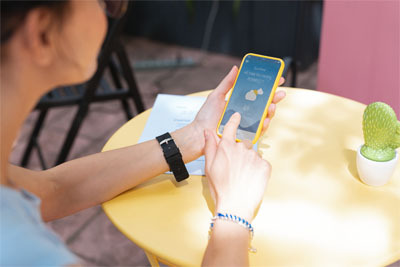
Most of us rely on apps for some daily weather information. Apps are convenient, easy to use, and update much more frequently than waiting for the five-o-clock news.
Weather apps abound. Some apps may have flashier user interfaces, while others offer special tools or alerts, but what is the most accurate weather app?
This article will help you find the most reliable weather source and give you more context about weather app accuracy.
How Accurate Are Weather Forecasts?
While everyone can think of that time or two (or maybe more) that a meteorologist got things super wrong, the reality is that current weather forecasts are, on average, extremely good.
The NOAA says that, on average, a five-day forecast is correct about 90% of the time, while a seven-day forecast can accurately predict the weather 80% of the time. By day 10, forecasts are only accurate approximately 50% of the time.

Why does this happen? The answer lies in an idea central to meteorology—chaos theory.
If you’ve heard some version of the saying “a butterfly flaps its wings in Brazil and causes a tornado to touch down in Texas,” that’s the idea behind chaos theory.
A tiny disturbance now can have huge and unexpected consequences later, meaning that after even just ten days, weather forecasts become almost useless. We can’t possibly account for every tiny disturbance.
Imagine trying to track down every butterfly and all the disruptions to the air that you might create in the process. At some point, those little disturbances will overwhelm whatever forecast models we were relying on.
How Do Weather Apps Work, and Why Are They Sometimes Wrong?
How do weather apps give you a forecast anyway? They rely on computer models of the atmosphere, where information about what the weather is doing now is used to predict what might happen in the future.
Weather Apps Work in Fragments
Because computers have limited capabilities, weather models have to split the world into little boxes to get a handle on the problem.
Depending on the model, these boxes cover between two and six miles in any direction. Since the model treats everything within those boxes equally, it’s important to note that reality is often different.
A small summer thunderstorm over Atlanta might only be a mile wide, not occupying a whole box and completely flying “under the radar” from the weather app’s perspective.
Similarly, if your box includes 25 square miles of land and 5 square miles of ocean, the average temperature will look more like the inland heat than the cool sea breeze you may feel on the beach. The same holds true for areas of mountainous terrain.
The size of these boxes, and the fact that all weather apps rely on some version of them, is a big reason you might not see a perfect forecast from your app.
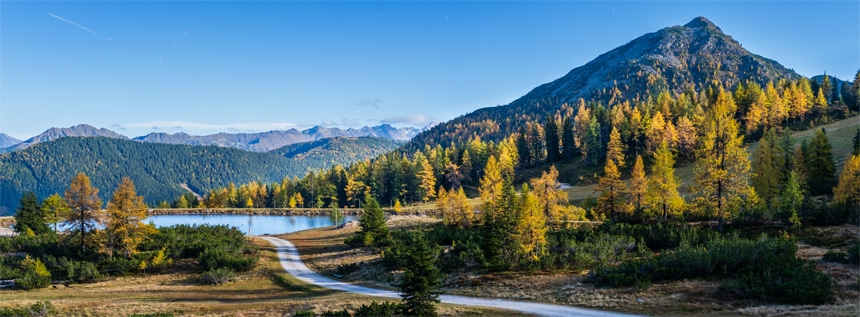
Despite the wildly varying topography in the photo above, weather models would treat most of this area as a single box, predicting average conditions that may not represent either the mountain base or summit.
One way weather apps often deal with this problem, especially for precipitation, is by giving you a percentage chance of rain or snow. Usually, these percentages are computed for the whole box, even though the real threat might be more concentrated on a mountaintop, for instance.
For a more detailed look at the probability of precipitation, how it’s calculated, and some common misconceptions, check out our article on the percentage of rain meaning.
Weather Models Make Assumptions
Another big reason has to do with how the weather models make assumptions about what the weather now might mean for the weather later.
Different models (and apps) make slightly different assumptions, leading to drastically different forecasts. These assumptions are accurate most of the time, which is why weather apps generally won’t lead you too far astray.
However, the assumptions usually have flaws, leading to inaccurate forecasts. For example, NOAA’s flagship weather model, the GFS (Global Forecast System), which powers most modern weather apps, has recently been having trouble with an assumption. It assumes how heat and moisture are distributed through the lowermost layer of the atmosphere during very hot days in semiarid climates. Most people won’t notice this, but if your app suddenly predicts a high of 120°F in Denver, this kind of flawed assumption is to blame.
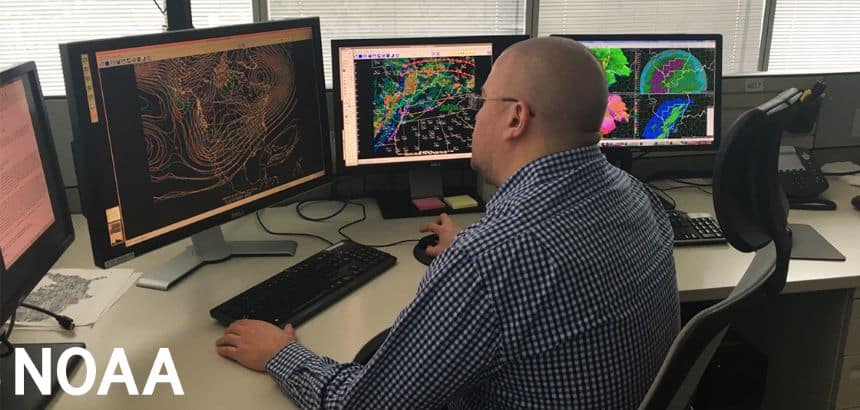
Because modern weather apps generally don’t have human meteorologists keeping real-time watch over the forecast, they are susceptible to these assumption errors.
Some modern weather apps, such as The Weather Channel, have some human input that can help catch these problems before an update. Other apps use modern statistics or machine learning to detect forecast values that seem out of place and to reduce their extremity.
The drawback there is that sometimes extreme weather does happen! Either way, dealing with some of the biases that arise from flawed weather model assumptions is one of the significant challenges weather apps face and one of the main reasons they can be wrong.
Weather Model Accuracy Myths
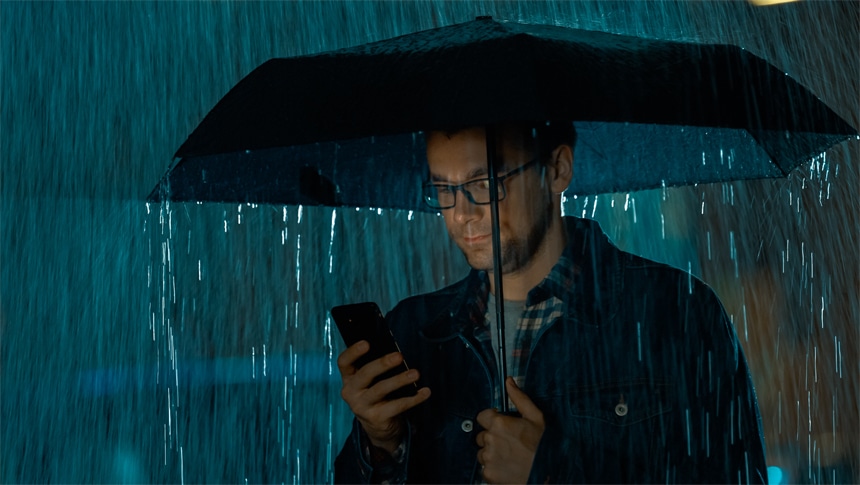
Everyone has their favorite theory for why weather apps might be wrong. Here are some theories you’ll often hear or may even have considered:
“They just don’t understand our unique weather here in <insert state>!”
“We’re too far from the nearest airport!”
“Weather observations aren’t taken often enough around here!”
These all range from half-truths to outright myths. Let’s explore why.
Unique Geography Myths
Are weather apps better or worse in certain areas? Generally, no.
According to Forecast Advisor, your forecast in Dallas (~83% accurate) is going to be about as good as in Chicago (~83% accurate) or New York (~82% accurate).
You could claim that the weather apps don’t understand Texas’ notorious Blue Norther windstorms, and I’d come right back by saying they do just as poorly with lake breezes off Lake Michigan or sea breezes off the Atlantic Ocean.
There may be one justifiable exception. Mountains wreak havoc on weather models because the boxes are far too big to “see” all the ridges, valleys, and peaks that are so important for any given location’s weather.
Bozeman, MT, for instance, only averages ~77% accurate forecasts. However, this five percentage point drop in forecast accuracy (compared to the locations mentioned above) is pretty tiny in the grand scheme.
Even the notoriously “unpredictable” high steppes of Montana, surrounded on all sides by towering mountains, still enjoy accurate forecasts more than three-quarters of the time.
Distance from Airports
How about your distance from the nearest airport? This theory is often cited as a reason for inaccurate forecasts because weather observations are usually taken at airports to support safe flight operations.
If you live many miles from the nearest airport, how do the weather models know what’s happening in your town? The answer is satellites.
The vast majority (>80%) of input data to weather models come from satellites orbiting the earth 24/7, observing the whole world, including parts miles from airports.
Surface observations are important, especially for meteorologists trying to double-check if weather models are doing a good job. However, your app uses satellite data for its forecast, and proximity to airports and observation stations won’t affect its accuracy.
Satellite Data for Accuracy
Check out this image showing all the observations entered into NOAA’s Global Forecast System (GFS) model for one run in December 2014 (the only change since then has been more satellite data—much more satellite data):

All the teal-colored dots are surface stations (like those at airports). There aren’t that many!
Most of the dots (orange, red, blue, and purple) denote data from various satellite sources, with a healthy minority (yellow) coming from airplane and weather balloon observations.
The bottom line? Satellites (and airplanes) rule the day in terms of feeding weather models (and thus apps) information about the current weather.
Satellites are also the reason why observation frequency doesn’t matter to your weather app.
Airport observations are usually taken every hour at about 50-55 minutes past the hour (this is so they could be sent via telegram to the radio stations back in the day for an updated look at the weather by the radio host at the top of every hour).
Does that mean your app is more accurate at 10:59 than it would’ve been at 10:49? No, satellites comprise most of the input data for weather models, and they update every 5-15 minutes.
The weather models themselves are only re-run every 6-12 hours, so in general, your forecast only changes once in the afternoon and once in the early morning.
Small tweaks to the near-term forecast (for today and tomorrow) may come more frequently, but the 3-10 day outlook is only updated a few times per day.
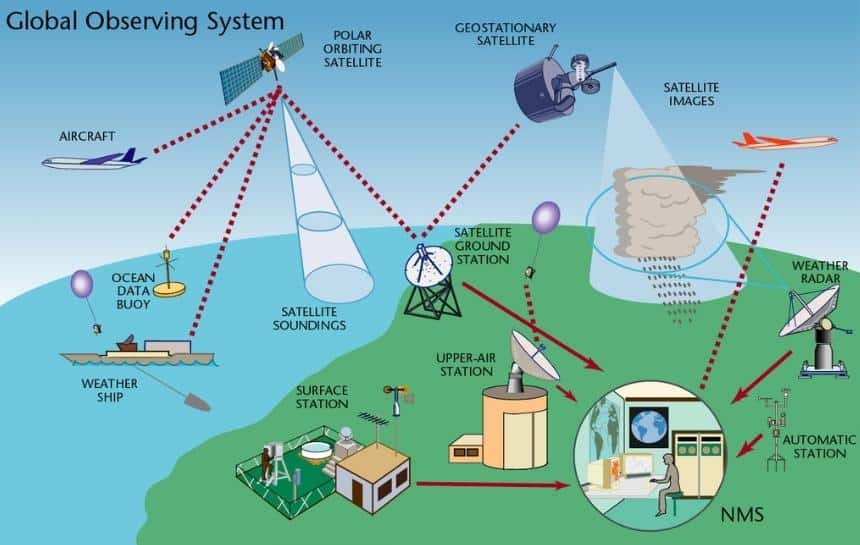
That said, some weather apps will display some form of “current conditions” reflecting the nearest airport observation.
If your app says it’s currently sunny, but it’s actually raining, an outdated or far-away observation may be to blame. But you didn’t need the app to tell you what you’re seeing outside!
Who Has the Most Accurate Weather Forecast for Your Area?
Do you want to know what weather app is the most accurate for your city?
Forecast Advisor has a neat tool that allows you to display a ranked list of weather apps according to their accuracy for any zip code in the US.
Keep in mind these rankings are based on one to three-day forecasts. If you often look at the five to seven-day outlook, you may come to slightly different conclusions.
Here Are the Most Accurate Weather Apps for My City
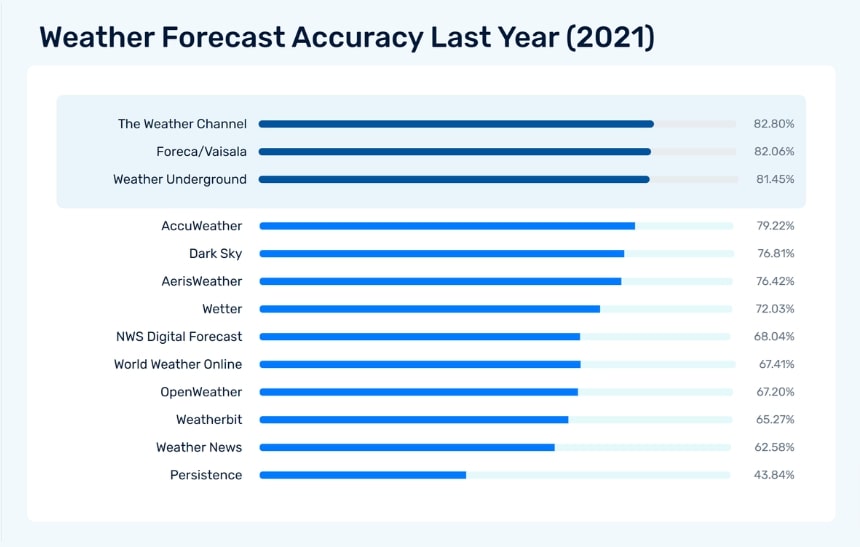
I’m from the Boston area, so here are my region’s four most accurate weather apps.
The screenshot above shows the complete rankings for Boston from Forecast Advisor, but I’ll focus on the top four.
As a quick note, Dark Sky was acquired by Apple a few years ago and starting with iOS16, the default Apple Weather app will be powered by the Dark Sky API. Dark Sky as a stand-alone app is no more, but it’s reasonable to assume the new Apple Weather will be roughly as accurate.
The Weather Channel powered previous versions of the Apple Weather app, so you can use TWC’s ranking as a proxy for your default Apple Weather app if you haven’t yet upgraded to iOS16.
1. The Weather Channel
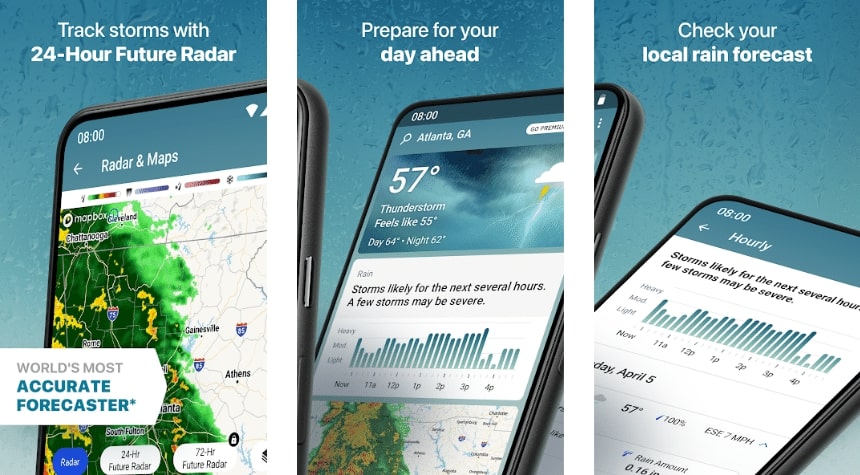
Compatibility: Android / iOS
Price: Free with in-app purchases
Website: https://weather.com/
TWC is often the number one ranked app because of its unique combination of weather models and human meteorologist insight.
The Weather Channel is the de facto standard and one of the most reliable weather apps. It offers an intuitive user interface along with other features such as radar imagery and even a “future radar” model of where storms might be headed in the future.
TWC also offers an important emergency alert feature that will send notifications if the National Weather Service issues severe weather warnings for your area. This alert feature is a great way to keep up with the latest official information during extreme weather events.
Pros:
- Intuitive user interface
- Reliable forecasts
- Emergency alerts
Cons:
- Few options to customize your experience
- Smoothed radar data can be misleading
2. Foreca/Vaisala
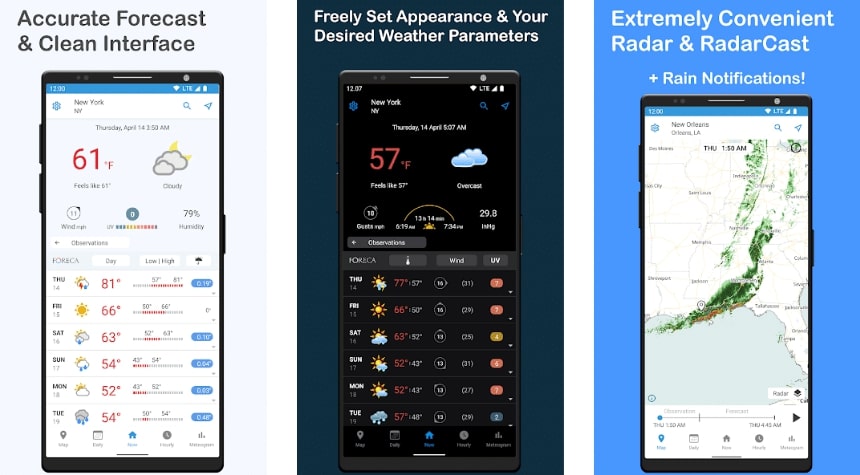
Compatibility: Android / iOS
Price: Free with in-app purchases
Website: https://www.foreca.com/
Foreca has many of the same features as The Weather Channel, including some radar imagery and emergency alerts for NWS warnings. They also have an interesting library of historical weather data if you want to remember what the weather was like weeks or months ago.
This app offers a bit more potential for customization if you like being able to tinker around with the display settings. Forecast accuracy usually isn’t quite what The Weather Channel’s is, but Foreca isn’t far behind.
Pros:
- Highly customizable
- Easy access to historical weather data
- Emergency alerts
Cons:
- Often slightly less accurate than TWC
- Smoothed radar data can be misleading
3. Weather Underground
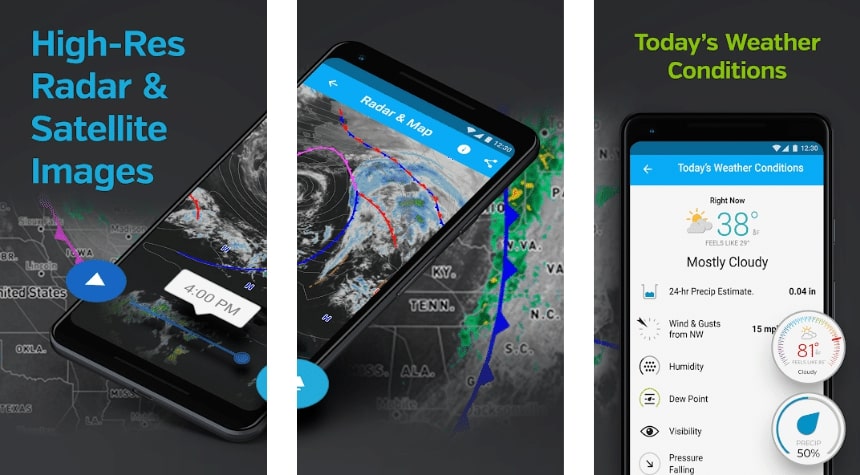
Compatibility: Android / iOS
Price: Free with in-app purchases
Website: https://www.wunderground.com/
After being acquired by The Weather Channel, Weather Underground has taken a bit of a hit if you ask me, but their app is still highly rated.
Powered by a very similar model/human interface as The Weather Channel, Weather Underground gives you many of the same features and accuracy as The Weather Channel’s flagship app.
I prefer Weather Underground because of their “Wundermap,” which displays weather observations from amateur weather stations ordinary people set up in their backyards.
The network of weather stations gives me access to much more real-time weather data than if I was to rely on only official stations, though with the caveat that you sometimes have to do some back-of-the-envelope quality control.
Another cool benefit of Weather Underground is the ability to set custom activity-specific parameters to quickly see when weather conditions will meet your standards for hiking, biking, skiing, or whatever activities you like to do outside.
Pros:
- Access to backyard weather station data
- Ability to set custom activity-specific parameters
Cons:
- Smoothed radar data can be misleading.
- WunderMap can get crowded and occasionally glitches.
4. AccuWeather
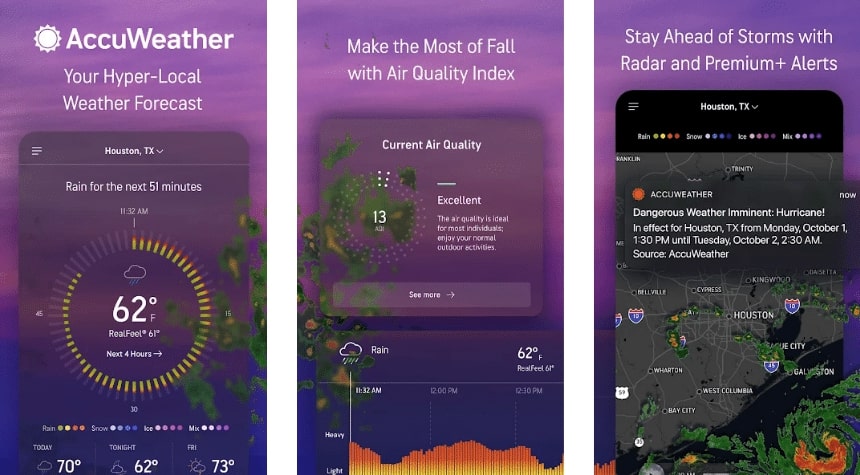
Compatibility: Android / iOS
Price: Free with in-app purchases
Website: https://www.accuweather.com/
AccuWeather is another extremely popular and generally reliable app.
They provide all the basics along with some neat bells and whistles such as air quality and pollen forecasts, as well as their highly-touted MinuteCast, which is supposed to tell you exactly when rain or snow is coming.
Color me skeptical, but don’t put any faith in their 45 or 90-day forecasts, which are worse than flipping a coin (remember, forecast accuracy decreases below 50% around day 10).
AccuWeather does offer NWS emergency alerts. However, they also like to push their premium alerts which can be confusing. When in doubt, trust the official word from the NWS.
Pros:
- Intuitive user interface/experience
- Some unique bells and whistles you won’t find anywhere else
Cons:
- Some of the bells and whistles are gimmicky
- AccuWeather warnings can be confusing when different from NWS warnings
Apps I Prefer as a Meteorologist
After extensive experimentation and evaluation, I only have two weather apps on my phone: RadarScope and Weather Underground.
RadarScope gives me access to the best high-resolution radar data with many tools for in-depth analysis. Weather Underground gives me access to backyard weather observations and a quick look at the forecast if I don’t have time to come up with one of my own. These two apps provide all I need since I spend most of my days looking at and forecasting the weather, but if you want more guidance from your apps, any of the options in the list above will work for you.
Final Thoughts
Here’s a dirty secret about weather app accuracy—they’re all the same.
Yes, Forecast Advisor ranked The Weather Channel a bit higher than Accuweather for Boston for one year, but it can change the next. Besides, I challenge anyone to tell me they notice the extra 0.5-1.5% accuracy that separates the top of the pack from #4-5.
Pick your weather app based on the user interface that’s most visually appealing or easy to use, and consider the features you most appreciate. None of the top 4-5 apps will let you down any more than the others.
Another secret is that the weather apps are, by and large, pretty good. Most meteorologists (for obvious reasons) won’t admit this, and apps can and do lead you astray sometimes. During deadly weather, there is no substitute for a real live human expert meteorologist.
If a hurricane is in the forecast, a tornado is bearing down, or a blizzard is on the way, it’s best to tune in to local radio stations or read NWS warnings. For regular weather, your weather app will do just fine as long as you don’t expect too much out of it.
Finally, be wary of the radar functionalities that come with these apps. They are often “smoothed” to look prettier, but that obscures the real underlying data. This smoothing is one common reason why the radar in your app might say it’s pouring, but really, it’s sunny.
To get the most up-to-date look at where it’s raining/snowing near you, take a look at our recommendations on the best weather radar apps.
For me, I’ll stick to RadarScope.





Why is there a difference in the forecast between the weather apps?
While all weather apps get their data from satellites and the NWS warnings, each has their own specific algorithm or weather model that they use to create weather forecasts. Each app may also be different for particular areas based on the geography and unique weather patterns of that area.
How can I get more detailed and accurate weather forecasts for my area when the apps are so incorrect?
If you want up to date forecasts, the best bet is to get a home weather station, which uses measurements of air pressure, wind speed, humidity, and temperature to create more accurate short-term weather forecasts.